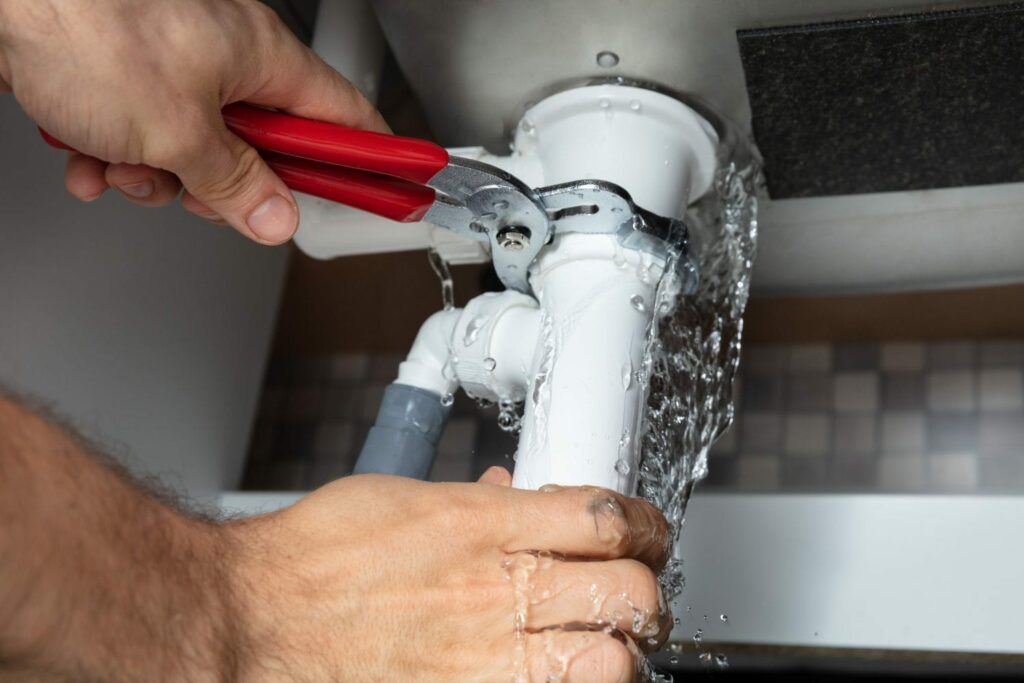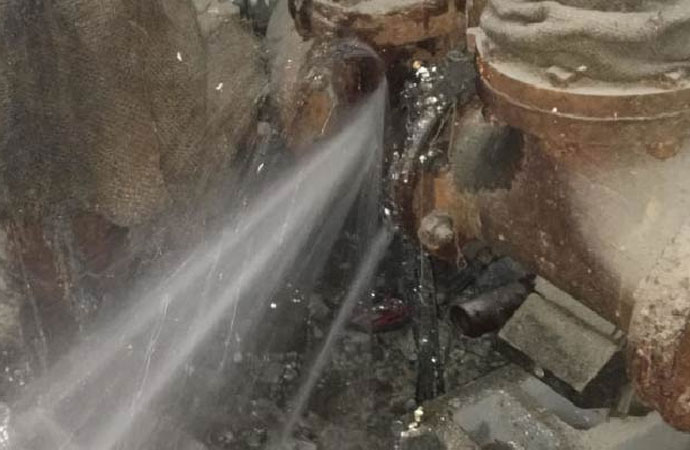What to Swiftly Detect and Resolve a Leaking Pipe Challenge
What to Swiftly Detect and Resolve a Leaking Pipe Challenge
Blog Article
What are your thoughts on How to install a dishwasher safely?

A burst pipeline is a major emergency; you can just stand as you see water you pay very much to reunite with the planet. In worse instances, you discover a swimming pool on your kitchen area floor, which is a fantastic journey hazard, specifically if you have youngsters around. If the pipeline that ruptured was in your walls, bad news: you might require to repaint that whole section.
How can a calamity like a burst pipe be stopped and handled? Well, by paying attention to your expert emergency plumbing professionals and also following these regulations.
How do I know when my pipes have ruptured?
Changing water stress
Pipelines do not just burst in a day. You might have observed that your kitchen tap or shower does not run instantly when you turn the faucet. It may stop briefly for a couple of seconds and then blast you with even more pressure than normal.
In various other circumstances, the water might seem typical at first, then drop in pressure after a few secs.
Damp wall surfaces and water spots
Prior to a pipeline ruptureds, it will leak, a lot of times. If this persistent leaking goes undetected, the leakage might graduate into a large tear in your pipeline. One simple way to avoid this emergency is to look out for damp wall surfaces ad water discolorations. These water spots will lead you right to the leak.
Puddles under pipelines and also sinks
When a pipe bursts, the outflow creates a pool. It might appear that the pool is growing in dimension, and no matter the amount of times you mop the pool, in a few minutes, there's another one waiting to be cleaned. Frequently, you might not be able to map the pool to any visible pipelines. This is an indication to call a specialist plumber.
Untraceable dripping noises
Pipeline bursts can take place in one of the most undesirable locations, like within concrete, inside wall surfaces, or under sinks. When your house goes quiet, you might have the ability to listen to an annoyingly consistent dripping noise. Also after you've examined your shower head as well as kitchen area faucet, the trickling might continue.
Precious reader, the trickling might be coming from a pipeline inside your wall surfaces. There isn't much you can do regarding that, other than tell an expert plumber.
Turn off the Water
When water ices up, it increases in quantity by about 9 percent. And it broadens with significant force: The pressure inside pipelines might go from 40 pounds per square inch to 40,000 psi! No pipeline can hold that much stress, so it bursts. The break may occur where the ice forms, however regularly, it takes place where water pressure locates a weak spot in the pipeline. That may be inches and even feet from the icy location. Discover the water shutoff valve and also turn off the water to prevent more damage. You might additionally require to shut off the electricity also, depending on where the leakages occurs and also just how big it is.
Infected water
Many people presume a ruptured pipe is a one-way outlet. Quite the contrary. As water spurts of the hole or gash in your plumbing system, contaminants locate their way in.
Your water might be infected from the resource, so if you can, inspect if your water tank has any kind of issues. However, if your alcohol consumption water is provided and cleansed by the city government, you must call your plumber immediately if you see or scent anything amusing in your water.
What do I do when I find a ruptured pipe?
Your water meter will certainly remain to run even while your water wastes. To minimize your losses, locate the primary controls and turn the supply off. The water mains are an above-ground framework at the edge of your residential or commercial property.
How to Fix & Detect a Leaking Pipe
How Do I Know if a Pipe is Leaking?
Leak detection tests can help you determine if your pipe has a leak. Even if you don’t see an apparent leak, you should still conduct leak detection tests regularly to save water and money—and prevent major damage to your home.
Water meter. It can be helpful to figure out what your usual water meter usage numbers are and then monitor them regularly. To monitor your meter, first, turn off all water faucets in your home. Check the meter and write down the numbers. In a few hours, check the meter again. If the numbers have changed, you have a leak. Water gauge. Use a water gauge to test your water pressure. Your showerhead should produce a certain amount of water pressure based on its model and design. If the pressure is lower than it is supposed to be for that specific showerhead, your home likely has a leak. Puddles. Look inside your bathroom, laundry, and kitchen sink cabinets. Puddles around the cabinets or around toilets, tubs, showers, and washing machines indicate the presence of a leaking pipe. You may also notice loose tiles, peeling or flaking paint, or mold caused by water accumulation. Napkin test. Even if you don’t see any puddles, you may still have a leak. You can test for water leaks in the bathroom, laundry, and kitchen by wiping below-sink connections with a napkin, paper towel, or piece of toilet paper. If it becomes damp, you probably have a leaking pipe under the sink. Discolored walls. Walls that are discolored—usually with brown or yellow stains—or bulging might mean that they have been impacted by water damage caused by a leaking pipe. Smell. A leaky pipe will create sitting water, and over time, that water may develop a musty smell. If your home smells musty, but you can’t locate the source, it may be due to a leak. Steps for Fixing a Leaking Pipe
A leaky drain can be remedied by tightening the pipe base, replacing the drain seal, caulking the rim, and tightening the pipe nut. Similarly, a leaking toilet pipe can be treated by tightening the packing nut. You may also need to replace the valve. A leaky faucet may just need tightening or replacement of the washers. If that doesn’t work, consider replacing your faucet. If your pipe has a hole in it, you may want to use a pipe leak sealer or pipe leak tape. This quick fix for water pipe leaks can also temporarily fix a copper pipe leak. https://www.ahs.com/home-matters/quick-tips/how-to-tell-if-pipes-are-leaking/

Do you appreciate reading about What to Know Before Installing a Dishwasher? Leave a remark further down. We would be delighted to know your suggestions about this content. In hopes to see you back again later on. Don't hesitate to take a moment to distribute this blog post if you appreciated it. Thank you for going through it.
Go Services Report this page